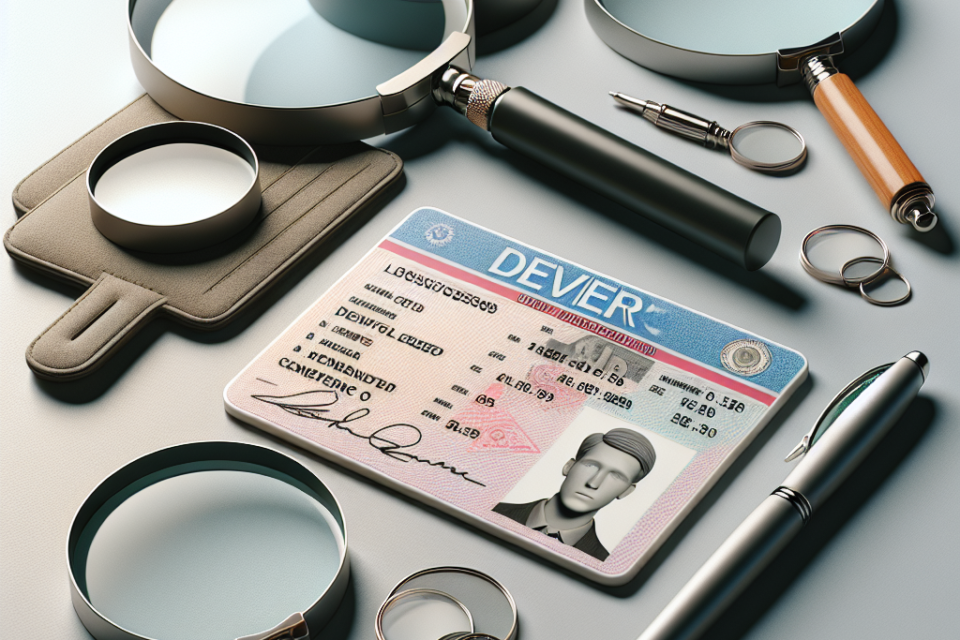How to Spot a Fake Driver’s License?

The rise in fraudulent activities has made it essential to be able to spot a fake driver’s license. Whether you are a business owner, employer, or a vigilant citizen, knowing how to identify counterfeit licenses is crucial. Fake IDs can lead to severe consequences, including legal issues and security threats. This guide aims to provide practical tips and techniques to spot a fake driver’s license effectively.
Physical Features to Inspect
Most fake driver’s licenses can be identified by closely examining their physical features. Here are some key elements to look for when inspecting a license:
- Holograms and Watermarks: Authentic licenses often contain holograms or watermarks that change when tilted. Counterfeit versions may lack these elements or display poor-quality imitations.
- Font Consistency: Examine the fonts used on the driver’s license. Genuine licenses have consistent and uniform fonts. Variations in font style, size, or spacing can be a clear indicator of a fake.
- Laminate Quality: The laminate on a real driver’s license is typically smooth and durable. Fake IDs often have poorly applied or low-quality laminate that bubbles or peels.
- Card Thickness: Authentic licenses have a standard thickness. Fake licenses may feel thinner or flimsier.
- Edges: The edges of a legitimate driver’s license are clean-cut and well-defined. Rough or uneven edges are often a sign of a counterfeit.
Comparison Table for Physical Features
| Feature | Genuine License | Fake License |
|---|---|---|
| Holograms/Watermarks | Present, High Quality | Absent, Poor Quality |
| Font Consistency | Uniform | Inconsistent |
| Laminate Quality | Smooth, Durable | Poor, Bubbly |
| Card Thickness | Standard | Thinner/Flimsy |
| Edges | Clean-Cut | Rough/Uneven |
Technological Tools for Verification
Advancements in technology offer various tools to verify the authenticity of a driver’s license:
- UV Light: Shine a UV light on the license. Legitimate IDs often contain ultraviolet elements that glow under UV light. Fake IDs usually lack these features.
- ID Scanners: Specialized scanners can read the barcodes and magnetic strips on a driver’s license. If the scanner cannot read the information or the data does not match the printed details, the ID is likely fake.
- Online Databases: Some jurisdictions offer online verification tools where you can enter the driver’s license number to verify its authenticity. This is especially useful for employers and businesses.
Understanding Security Elements
Driver’s licenses come with several security features that make counterfeiting difficult. Familiarize yourself with these elements to better spot fakes:
- Microprinting: Many licenses have fine lines or tiny text that is difficult to reproduce. Use a magnifying glass to check for microprinting.
- Ghost Images: Some licenses include a secondary, faded photo of the license holder, known as a ghost image. This feature is challenging to replicate.
- Multiple Photos: Check for multiple photos or images embedded into the card. These can be difficult to forge accurately.
- Color Shifting Ink: Genuine licenses may use ink that changes color when viewed from different angles. Counterfeit licenses usually do not have this feature.
Common Security Elements
Below is a table summarizing common security elements found in genuine driver’s licenses:
| Security Element | Description |
|---|---|
| Microprinting | Fine lines or text that require magnification to read |
| Ghost Images | Secondary, faded photo of the holder |
| Multiple Photos | Embedded images that are hard to forge |
| Color Shifting Ink | Ink that changes color when viewed from different angles |
Legal Consequences and Risks
Possessing or using a fake driver’s license carries significant legal risks. Here are some potential consequences:
- Fines: Many jurisdictions impose substantial fines on individuals caught with fake IDs.
- Imprisonment: In severe cases, possessing or using a fake license can result in jail time.
- Permanent Record: A conviction for using a fake ID can result in a permanent criminal record, affecting future employment and other opportunities.
- Business Risks: For businesses, accepting a fake driver’s license can lead to legal liabilities and reputational damage.
Final Thoughts
Spotting a fake driver’s license is a valuable skill that can prevent fraud and protect against legal issues. By examining physical features, using technological tools, and understanding security elements, you can effectively identify counterfeit licenses. Always stay vigilant and up-to-date with the latest methods used by counterfeiters to ensure you are well-prepared to spot fake IDs.
